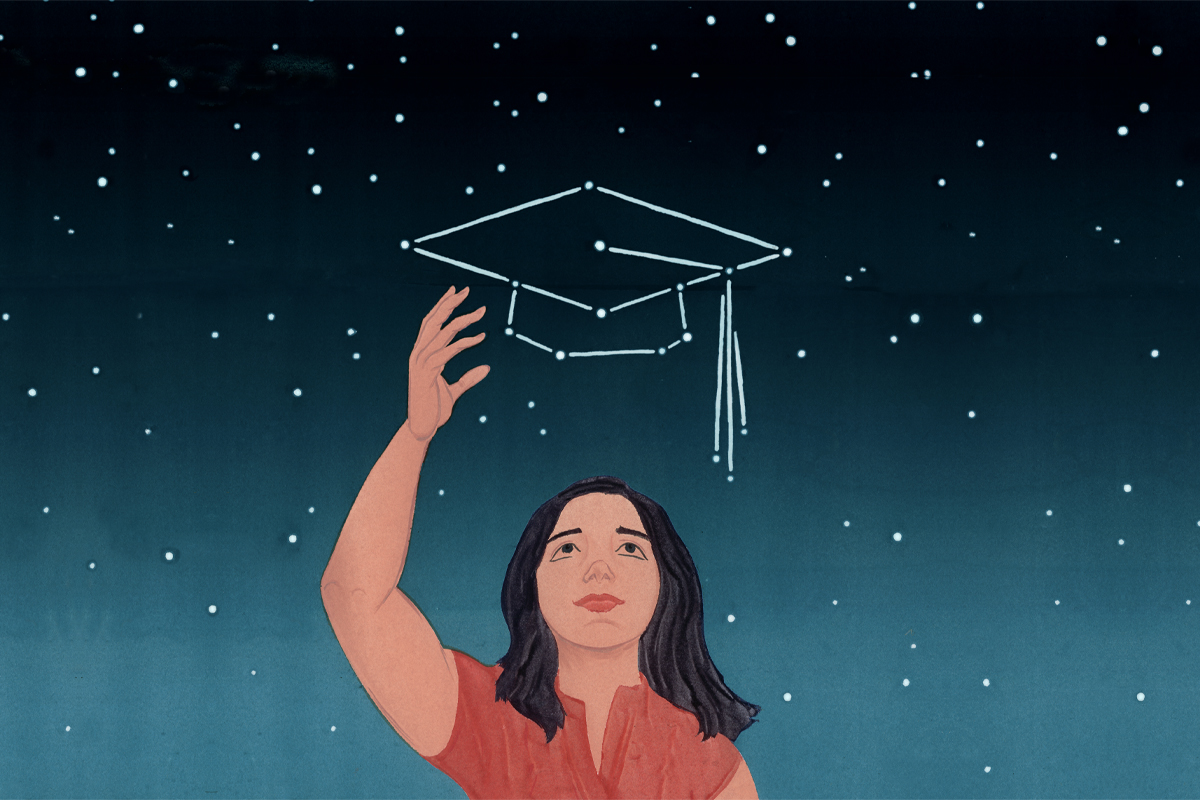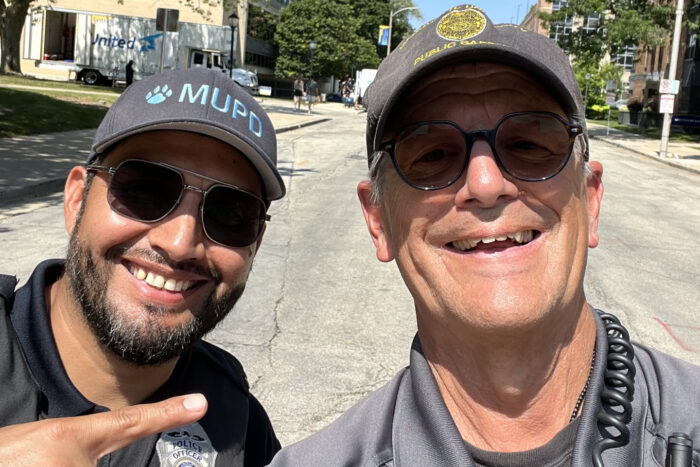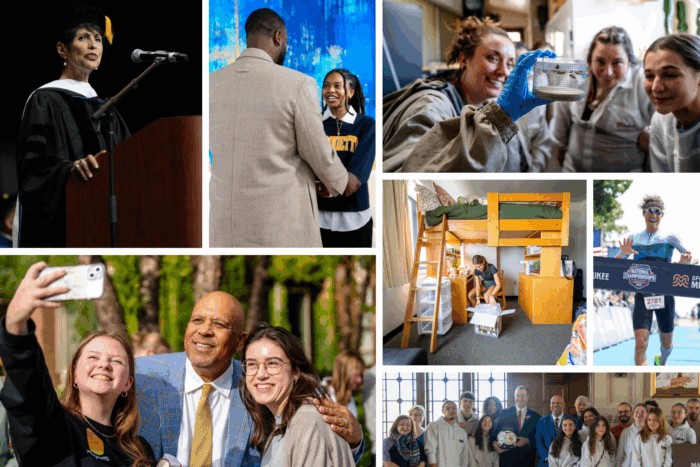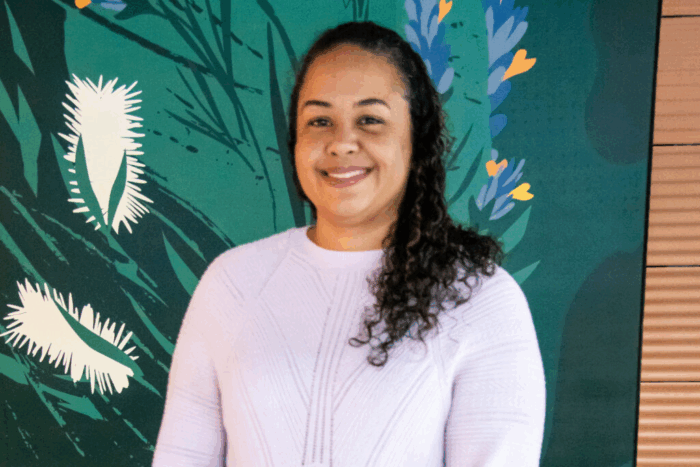Heading into his junior year, Golda Meir High School student Henderson Smith skipped the usual summer activities in favor of the classroom.
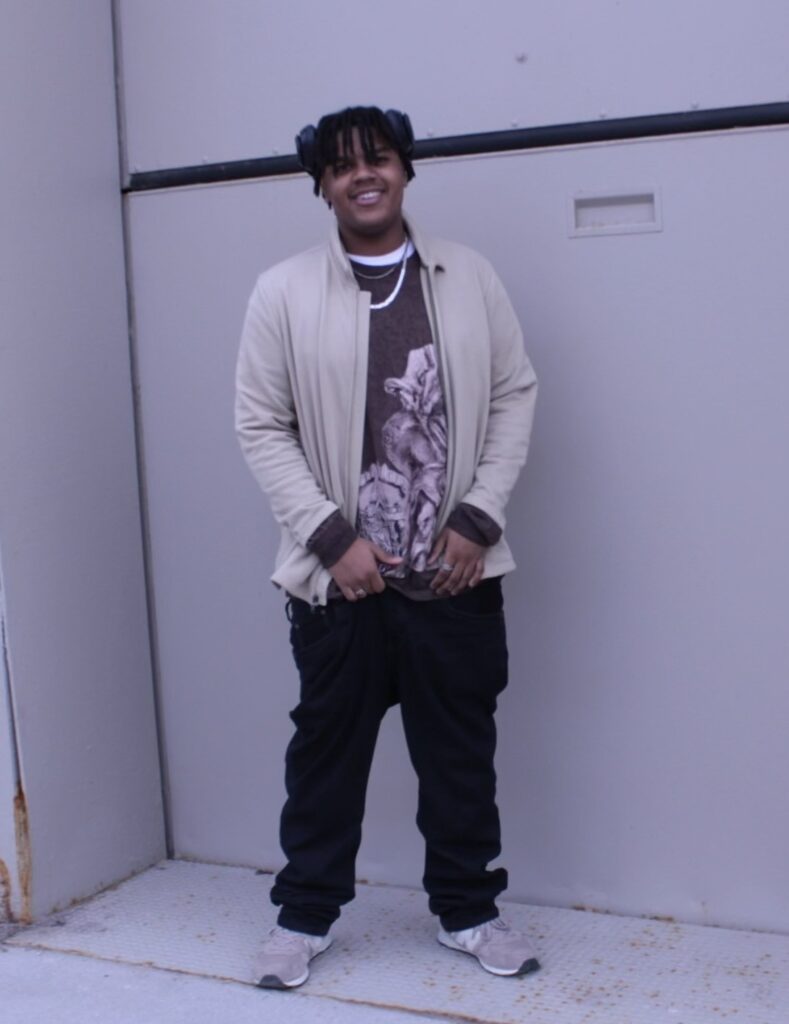
“I heard about the class Social Justice in Education and decided to sign up through Milwaukee Public Schools’ Department of Black and Latino Male Achievement (BLMA),” Henderson says. “I had been wanting to take a dual enrollment course, so this seemed like the perfect one to start with.”
Throughout the month, Smith and 15 other classmates met twice a week for three hours on Marquette’s campus engaging with questions about social justice in education. The new course focused jointly on equity and restorative justice in education along with historical movements and civil rights.
“The professors made the class interesting by making us interact with the material and themselves while they were teaching,” Henderson says. “Instead of just showing a PowerPoint, they made the class interactive, which is something a lot of teachers don’t do.”
Dr. Gabriel Velez, assistant professor of educational policy and leadership in the College of Education and faculty director of the Black and Latino/a Ecosystem and Support Transition (BLEST) Hub, alongside Dr. Robert Smith, professor of history and director of the Center for Urban Research, Teaching and Outreach (CURTO), tried to make every class experiential.
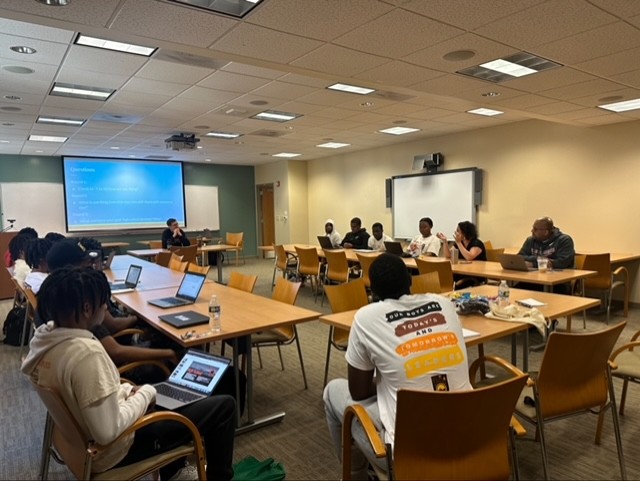
Each class uses restorative practice rituals where students gather in a circle and reflect on their day — they often share thoughts related to inequity and injustice. The exercise helps build a sense of community and reinforces the importance of communal bonds.
“We sought to make the course engaging and linked to the community,” Velez explains. “We had one class at America’s Black Holocaust Museum. We also invited Milwaukee Success Youth Ambassador Program, Bembe Drumming, MPS’ Department of Restorative Practices and the College of Education to run special sessions and participate in our course. Students also had to attend and reflect on one community event, integrating course work into what they were seeing and experiencing in Milwaukee. Lastly, our final project was envisioning what a ‘just’ school would be, drawing on the theory and research from the course to create their own school.”
Show and tell
Marquette’s College of Education and CURTO conceived this unique experience in fall 2022, with the first course taught the following spring through the BLEST Hub in partnership with BLMA at MPS. The program since expanded with the addition of the summer courses.
Dr. Leigh van den Kieboom, associate dean in the College of Education, says classes like this one are a steppingstone to higher education for many students.
“Dual enrollment classes support high school students in envisioning their future as a college student by providing opportunities for them to receive college credit, while also orienting them to what college academics entails with campus visits and more,” van den Kieboom says.
The content in this course and others like it is equivalent to what’s offered to traditional undergraduate students at Marquette. High school students completing a dual enrollment course receive a transcript from Marquette University indicating their course was completed.
“What makes the MPS dual enrollment course offerings different is that Marquette University professors teach the courses,” van den Kieboom says. “In many dual enrollment programs, the instructor is not directly connected to the university. Direct connection to a Marquette University instructor, who is a teacher-scholar, is an important part in the design of our course.”
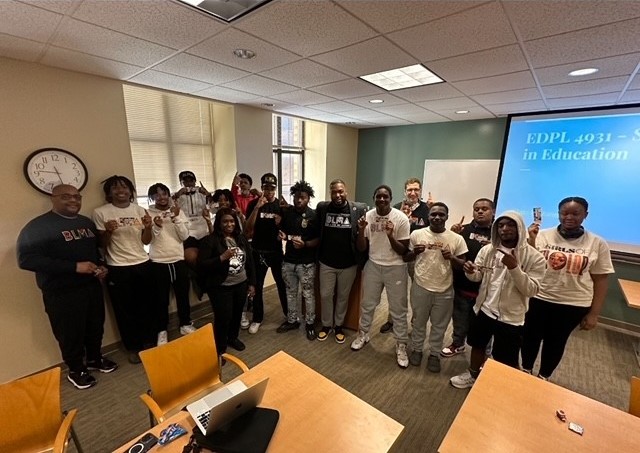
As Velez looks toward the future, he envisions an expansion of classes like this one but also believes that the youth should be teaching today’s educators.
“I think there is so much life, perspective, energy, important questioning and other strengths that the students bring to the table,” Velez explains. “I am an optimist and generally see the future as bright, but I also think we need to seriously rethink and be open to restructuring how we engage young people in education so that we foster their intellectual, personal, communal and holistic thriving and contribution to our world.”
As for Henderson, he’s now planning his final two years of high school. Reflecting on the June course, he says it’s opened his eyes to what college life would be like; he plans on taking more dual enrollment courses in the future.
“I do plan on attending a university after high school,” Henderson says. “I feel after being forced to write high quality work so quickly during the course, that practice was excellent for my development as a scholar.”
